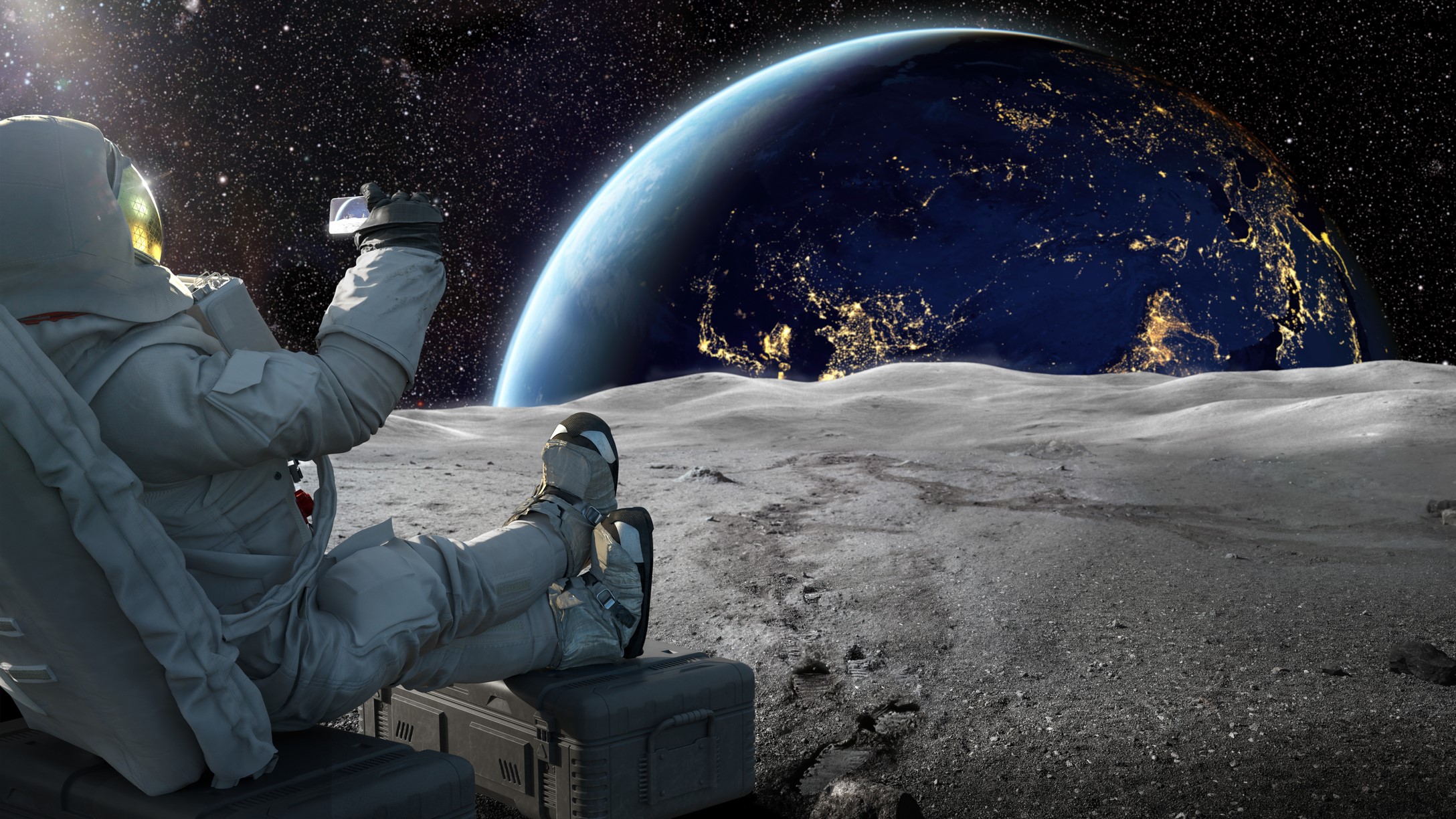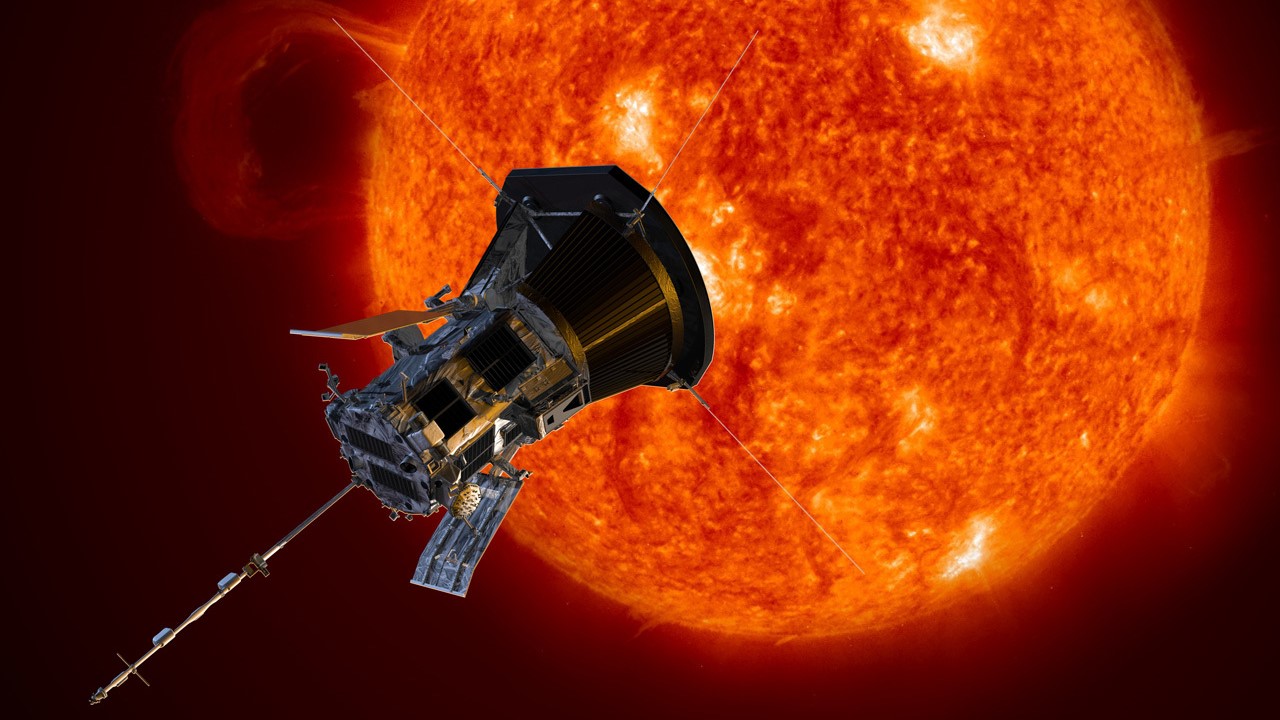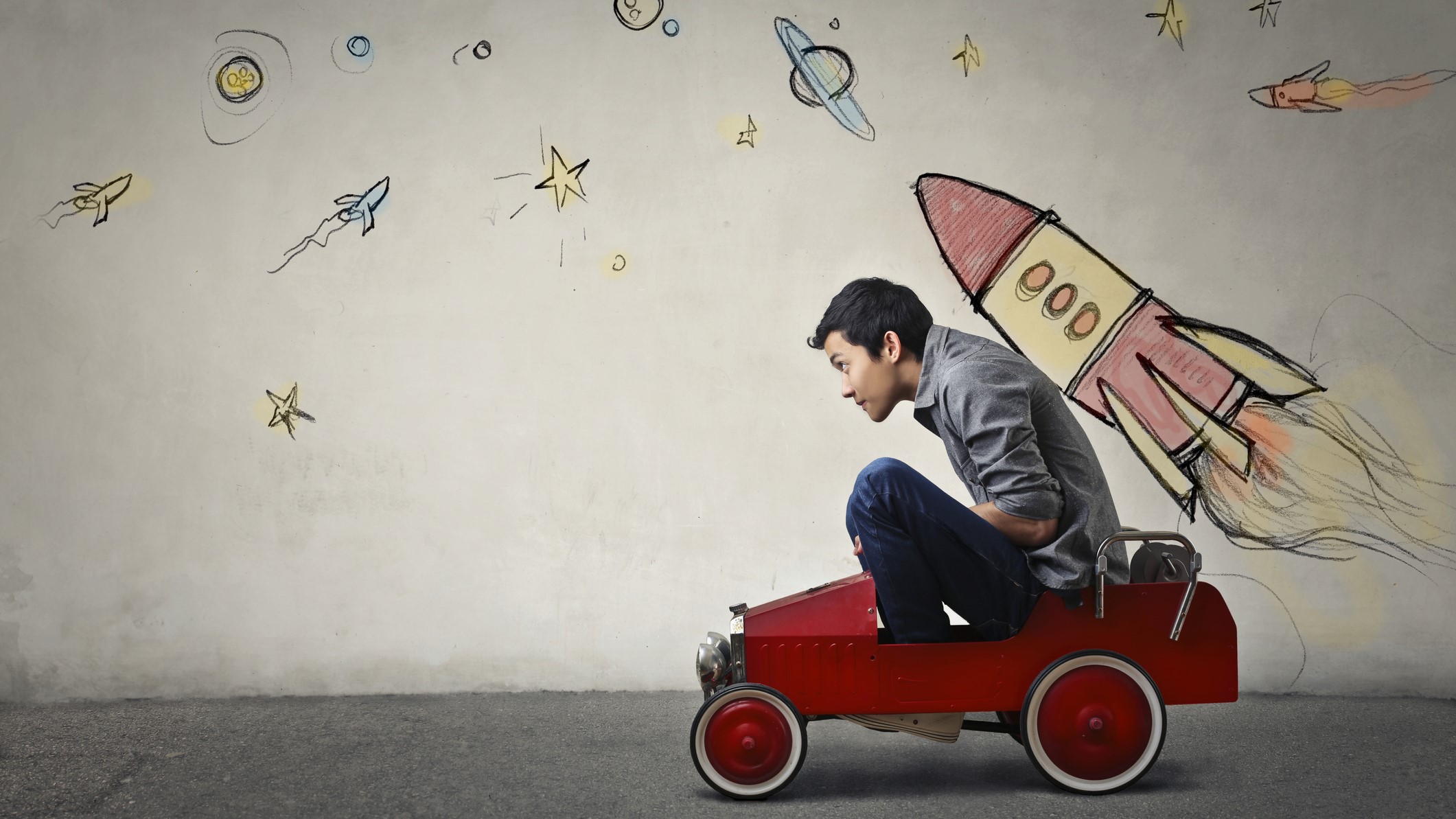How long does it take to get to the moon?
Here we explore how long it takes to get to the moon and the factors that affect the journey to our rocky companion.

If you wanted to go to the moon, how long would it take?
Well, the answer depends on a number of factors ranging from the positions of Earth and the moon, to whether you want to land on the surface or just zip past, and especially to the technology used to propel you there.
The average travel time to the moon (providing the moon is your intended destination), using current rocket propulsion is approximately three days. The fastest flight to the moon without stopping was achieved by NASA's New Horizons probe when it passed the moon in just 8 hours 35 minutes while en route to Pluto.
Currently, the fastest crewed flight to the moon was Apollo 8. The spacecraft entered lunar orbit just 69 hours and 8 minutes after launch according to NASA.
Here we take a look at how long a trip to the moon would take using available technology and explore the travel times of previous missions to our lunar companion.
Related: Missions to the moon: Past, present and future
How far away is the moon?
To find out how long it takes to get to the moon, we first must know how far away it is.
The average distance between Earth and the moon is about 238,855 miles (384,400 kilometers), according to NASA. But because the moon does not orbit Earth in a perfect circle, its distance from Earth is not constant. At its closest point to Earth — known as perigee — the moon is about 226,000 miles (363,300 km) away and at its farthest — known as apogee — it's about 251,000 miles (405,500 km) away.
How long would it take to travel to the moon at the speed of light?
Light travels at approximately 186,282 miles per second (299,792 km per second). Therefore, a light shining from the moon would take the following amount of time to reach Earth (or vice versa):
- Closest point: 1.2 seconds
- Farthest point: 1.4 seconds
- Average distance: 1.3 seconds
How long would it take to travel to the moon on the fastest spacecraft so far?

The fastest spacecraft is NASA's Parker Solar Probe, which keeps breaking its own speed records as it moves closer to the sun. On Nov. 21, 2021, the Parker Solar Probe clocked a top speed of 101 miles (163 kilometers) per second during its 10th close flyby of our star, which translates to a blistering 364,621 mph (586,000 kph). According to a NASA statement, when the Parker Solar Probe comes within 4 million miles (6.2 million kilometers) of the solar surface in December 2024, the spacecraft's speed will top 430,000 miles per hour (692,000 km/h)!
So if you were theoretically able to hitch a ride on the Parker Solar Probe and take it on a detour from its sun-focused mission to travel in a straight line from Earth to the moon, traveling at the speeds the probe reaches during its 10th flyby (101 miles per second), the time it would take you to get to the moon would be:
- Closest point: 37.2 minutes
- Farthest point: 41.4 minutes
- Average distance: 39.4 minutes
How long would it take to drive to the moon?

Let's say you decided to drive to the moon (and that it was actually possible). At an average distance of 238,855 miles (384,400 km) and driving at a constant speed of 60 mph (96 km/h), it would take about 166 days.
Q&A with an expert
We asked Michael Khan, ESA Senior Mission Analyst some frequently asked questions about travel times to the moon.
Michael Khan is a Senior Mission Analyst for the European Space Agency (ESA). His work involves studying the orbital mechanics for journeys to planetary bodies including Mars.
How long does it take to get to the moon?
And what affects the travel time?
The time it takes to get from one celestial body to another depends largely on the energy that one is willing to expend. Here "energy" refers to the effort put in by the launch vehicle and the sum of the manoeuvres of the rocket motors aboard the spacecraft, and the amount of propellant that is used. In space travel, everything boils down to energy. Spaceflight is the clever management of energy.
Some common solutions for transfers to the moon are 1) the Hohmann-like transfer and 2) the Free Return Transfer. The Hohmann Transfer is often referred to as the one that requires the lowest energy, but that is true only if you want the transfer to last only a few days and, in addition, if some constraints on the launch apply. Things get very complicated from there on, so I won't go into details.
The transfer duration for the Hohmann-like transfer is around 5 days. There is some variation in this duration because the moon orbit is eccentric, so its distance from the Earth varies quite a bit with time, and with it, the characteristics of the transfer orbit.
The Free Return transfer is a popular transfer for manned spacecraft. It requires more energy than the Hohmann-like transfer, but it is a lot safer, because its design is such that if the rocket engine fails at the moment you are trying to insert into the orbit around the Moon, the gravity of the Moon will deflect the orbit exactly such that it returns to the Earth. So even with a defective propulsion system, you can still get the people back safely. The Apollo missions flew on Free Return transfers. They take around 3 days to reach the moon.
Why are journey times a lot slower for spacecraft intending to orbit or land on the target body e.g. Mars compared to those that are just going to fly by?
If you want your spacecraft to enter Mars orbit or to land on the surface, you add a lot of constraints to the design problem. For an orbiter, you have to consider the significant amount of propellant required for orbit insertion, while for a lander, you have to design and build a heat shield that can withstand the loads of atmospheric entry. Usually, this will mean that the arrival velocity of Mars cannot exceed a certain boundary. Adding this constraint to the trajectory optimisation problem will limit the range of solutions you obtain to transfers that are Hohmann-like. This usually leads to an increase in transfer duration.
Calculating travel times to the moon — it's not that straightforward
A problem with the previous calculations is that they measure the distance between Earth and the moon in a straight line and assume the two bodies remain at a constant distance; that is, assuming that when a probe is launched from Earth, the moon would remain the same distance away by the time the probe arrives.
In reality, however, the distance between Earth and the moon is not constant due to the moon's elliptical orbit, so engineers must calculate the ideal orbits for sending a spacecraft from Earth to the moon. Like throwing a dart at a moving target from a moving vehicle, they must calculate where the moon will be when the spacecraft arrives, not where it is when it leaves Earth.
Another factor engineers need to take into account when calculating travel times to the moon is whether the mission has the intention of landing on the surface or entering lunar orbit. In these cases, traveling there as fast as possible is not feasible as the spacecraft needs to arrive slowly enough to perform orbit insertion maneuvers.
Moon mission travel times
More than 140 missions have been launched to the moon, each with a different objective, route and travel time.
Perhaps the most famous — the crewed Apollo 11 mission — took four days, six hours and 45 minutes to reach the moon. Apollo 10 still holds the record for the fastest speed any humans have ever traveled when it clocked a top speed of while the crew of Apollo 10 traveled 24,791 mph (39,897 kph) relative to Earth as they rocketed back to our planet on May 26, 1969.
The first uncrewed flight test of NASA's Orion spacecraft and space launch system rocket — Artemis 1 — reached the moon on flight day six of its journey and swooped down to just 80 miles (130 km) above the lunar surface to gain a gravitational boost to enter a so-called "distant retrograde orbit."
Additional resources
Read more about how space navigation works with accurate timekeeping with these resources from NASA. Learn more about how before the days of GPS engineers were able to navigate from Earth to the moon with such precision with this article by Gwendolyn Vines Gettliffe published at the Massachusetts Institute of Technology (MIT) 'ask an engineer' feature.
Bibliography
Hatfield, M. (2021). Space Dust Presents Opportunities, Challenges as Parker Solar Probe Speeds Back toward the Sun – Parker Solar Probe. [online] blogs.nasa.gov. Available at: https://blogs.nasa.gov/parkersolarprobe/2021/11/10/space-dust-presents-opportunities-challenges-as-parker-solar-probe-speeds-back-toward-the-sun/.
NASA (2011). Apollo 8. [online] NASA. Available at: https://www.nasa.gov/mission_pages/apollo/missions/apollo8.html.
www.rmg.co.uk. (n.d.). How many people have walked on the Moon? [online] Available at: https://www.rmg.co.uk/stories/topics/how-many-people-have-walked-on-moon.
Join our Space Forums to keep talking space on the latest missions, night sky and more! And if you have a news tip, correction or comment, let us know at: community@space.com.
Get the Space.com Newsletter
Breaking space news, the latest updates on rocket launches, skywatching events and more!

Daisy Dobrijevic joined Space.com in February 2022 having previously worked for our sister publication All About Space magazine as a staff writer. Before joining us, Daisy completed an editorial internship with the BBC Sky at Night Magazine and worked at the National Space Centre in Leicester, U.K., where she enjoyed communicating space science to the public. In 2021, Daisy completed a PhD in plant physiology and also holds a Master's in Environmental Science, she is currently based in Nottingham, U.K. Daisy is passionate about all things space, with a penchant for solar activity and space weather. She has a strong interest in astrotourism and loves nothing more than a good northern lights chase!
-
UFOareAngels The fact that we are still asking this question proves we never went to the moon and are never going back.Reply










